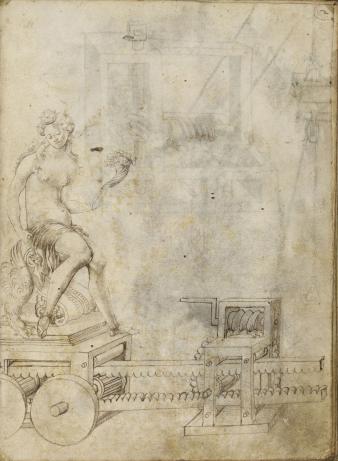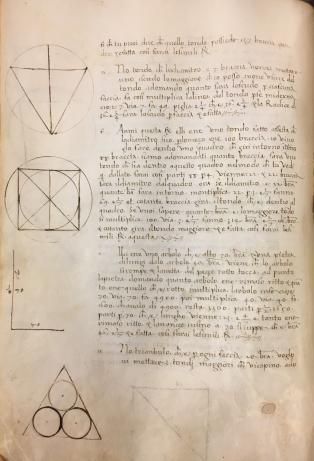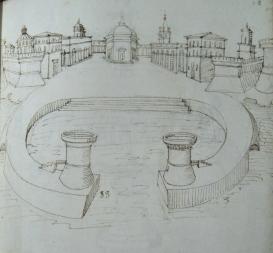
Francesco di Giorgio, Statue of Abundance on a trolley, folio 2r (c. 1480), Opusculum de’Architectura, 197.b.21, The British Museum, London
The theoretical development of architecture in the fifteenth and sixteenth centuries problematizes the meaning of “mechanical knowledge.” Architecture in fifteenth- and sixteenth-century Italy underwent a profound transformation. Among his myriad accomplishments, the Renaissance architect may be credited with the revival of ancient Roman forms, the development of modern fortifications, and the codification of sophisticated systems of visual representation. In keeping with the pervasive humanist ethos of early modern Italy, architects of the period conscientiously redefined their discipline, presenting themselves as authorial creators, and distancing themselves from what was considered the more menial, anonymous practitioners of the mechanical arts. Geometric processes of quadrature and stereometry, once disregarded as the tacit know-how of the uneducated builder, became canonized as the learned, yet practically applicable knowledge of the building designer. The development of architectural processes in this period was reinforced and augmented with the creation of new social and theoretical frameworks of knowledge. The research on Francesco di Giorgio, and the myriad components of his work, relates in detail the manifold nature of mechanically based, architectural knowledge in fifteenth-century Italy. Focusing on this one, highly influential figure not only offers insight into the discipline of architecture in this highly transitional moment of its history, but also relates an important episode within the greater, long-term evolution of mechanical knowledge.

Anonymous, explanation of practical geometry, folio 110v (c. 1470), Trattato della Arithmetica, codex Plimpton 194, Columbia University, New York

